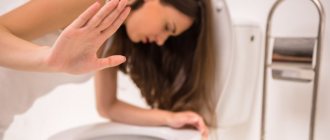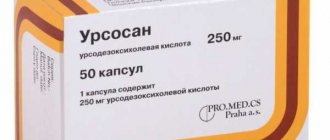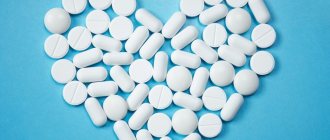The relevance of the problem of studying tic hyperkinesis is determined by the fairly high prevalence of this pathology in children. Thus, American researchers A. Shapiro and E. Shapiro [18] cite the prevalence of tics in children as 24%, R. Kurlan [16] - 21%. But J. Jankovic [13] gives a significantly lower figure - 4%, indicating that tics are somewhat more common at the age of 6-7 years - 10%; Swedish researchers N. Khalifa and A. von Knorring [14] discovered tics in 6.6% of schoolchildren aged 7 to 15 years.
According to modern concepts, various factors play a role in the occurrence and development of tics: genetic, psychological, as well as organic damage to the brain in the perinatal period [11, 13]. The clinical and social significance of tics is determined not only by hyperkinesis itself, but also by comorbid cognitive and behavioral disorders (attention deficit hyperactivity disorder, anxiety disorders, obsessive-compulsive disorders) [10].
Previous studies on tics focused mainly on disease-specific manifestations without taking into account the clinical polymorphism of this disorder.
According to ICD-10, transient and chronic tics are distinguished. Chronic tics (F.95.1) are a more severe variant of the disease. They occur many times during the day, almost daily or intermittently, for a year or more. More often we are talking about motor tics, vocalizations are less common. These tics can remain stable for many years, only fluctuating in the degree of their severity [3]. Increased hyperkinesis in these cases may be observed during periods of stress or fatigue. According to J. Scharf et al. [17], chronic tics occur in 1.1% of children.
According to V.P. Zykov [2], depending on the course, 3 types of course of chronic tics can be distinguished: remitting, stationary and progressive. For relapsing
The course of the disease is characterized by the alternation of exacerbations of tics by complete regression of symptoms or local single tics in the home environment.
Remissions in most patients occur in the summer months, exacerbations - in the autumn and winter months, which is associated with mental stress during training. The more severe the tics, the longer the exacerbations and the shorter the remissions, which is especially pronounced in patients with a hereditary genesis of the disease. The stationary
type of the disease is determined by the presence of persistent hyperkinesis of various muscle groups, which persist for 2-3 years.
The progressive
course is characterized by the absence of remissions, the transition of local tics to widespread tics and Tourette's syndrome, the complication of stereotypies and rituals, the development of tic status, and resistance to therapy.
Nootropic drugs (Pantogam, Phenibut) and antipsychotics (haloperidol, tiapride) are traditionally used to treat tics [1, 9, 13]. It should be noted that the latter often cause complications (extrapyramidal disorders, hypersomnia). The presence of comorbid cognitive impairments necessitates their correction and, accordingly, the development of new treatment methods.
In 2009, the authors [8] demonstrated the possibility of using the drug adaptol effectively in the treatment of tics. However, in the previously treated group of patients (30 children), there were few (13) patients with chronic tics, which is not enough to reliably assess the effectiveness of adaptol in these cases.
The purpose of this study is to continue studying the clinical and psychophysiological characteristics of various tics in children and to increase the effectiveness of the use of adaptol in the treatment of their chronic variants.
pharmachologic effect
Adaptol is a medicine belonging to the group of anxiolytic drugs. The drug has a tranquilizing effect. Effectively relieves feelings of fear, anxiety, eliminates irritability, anxiety, and reduces strong emotional stress. The effect of this medicine is not accompanied by changes in motor functions and muscle relaxation, or a decrease in mental activity. Thus, the drug is considered a daytime tranquilizer.
Adaptol tablets do not have a hypnotic effect, but at the same time potentiate the effect of drugs that are used to treat sleep disorders .
The drug provides an antioxidant effect, which is especially clearly manifested under stress of various origins, accompanied by oxidative phenomena.
The drug has antagonist-agonist properties of the adrenergic system. Dopamine is noted , and therefore a normosthenic effect is noted.
When taking tablets, the severity of withdrawal symptoms decreases in people who have stopped smoking tobacco.
The active substance affects the emotiogenic zones of the hypothalamus and the four main neurotransmitter systems, ensuring their balance and integration. In this case, there is no adrenergic blocking peripheral effect.
The nootropic effect of the drug is also noted. Adaptol activates cognitive functions, improves mental activity and attention.
Indications for use of Adaptol
The following indications for the use of Adaptol are determined:
- neuroses and neurosis-like symptoms;
- complex treatment, if necessary, to stop the somatovegetative side effects of antipsychotics and improve the tolerability of drugs from this group;
- pain in the heart not associated with angina ;
- vegetative manifestations during menopause ;
- oxidative stress of various origins;
- complex therapy for nicotine addiction.
To learn more about when Adaptol tablets are prescribed and what they are for, you can ask your doctor.
Adaptol 300 mg No. 20 caps.
Instructions for medical use of the drug ADAPTOL® Trade name adaptol® International nonproprietary name No Dosage form Capsules 300 mg Composition One capsule contains the active substance - mebicar 300 mg, excipients: methylcellulose, calcium stearate, composition of the capsule body and cap: gelatin, titanium dioxide E171. Description Hard gelatin capsules No. 0, white, containing white or almost white powder, are allowed in the form of a compacted column that crumbles when touched by a glass rod. Heterogeneity in particle size is allowed. Pharmacotherapeutic group Anxiolytics, others ATC code N05BX Pharmacological properties Pharmacokinetics When administered orally, 77-80% of the dose of the active substance enters the blood, up to 40% of which is bound by red blood cells. The rest of the mebicar does not bind to blood plasma proteins and is found in the plasma in a free form, is freely distributed throughout the body and freely overcomes cell membranes. The maximum concentration of mebicar in the blood is reached after 0.5 hours, and the high level remains for 3-4 hours, then gradually decreases. The half-life is 8 hours. The active substance is completely excreted from the body in urine and feces within 24 hours. The drug does not undergo biochemical transformations and does not accumulate in the body. Pharmacodynamics Adaptol has moderate tranquilizing activity, eliminates or weakens anxiety, anxiety, fear, internal emotional tension and irritability. Adaptol acts on the activity of structures included in the limbic-reticular complex, in particular, on the emotiogenic zones of the hypothalamus, and also has an effect on all 4 main neurotransmitter systems - GABA, cholinergic, serotonergic and adrenergic, promoting their balance and integration, does not have peripheral adrenergic effects actions. The tranquilizing effect of the drug is not accompanied by muscle relaxation and impaired coordination of movements. On this basis, adaptol is called a “daytime tranquilizer.” It does not have a hypnotic effect, but enhances the effect of sleeping pills and improves sleep in case of sleep disturbances. Adaptol eases or relieves nicotine withdrawal. Indications for use - neuroses and neurosis-like conditions occurring with symptoms of irritability, emotional instability, anxiety and fear - to improve the tolerability of neuroleptics and tranquilizers in order to eliminate the somatovegetative and neurological side effects they cause - for cardialgia of various origins (not associated with coronary heart disease) — as a means of reducing the desire to smoke tobacco, as part of complex therapy. Method of administration and dosage: adaptol is taken orally, regardless of food intake, 300-600 mg 2-3 times a day. The maximum single dose is 3 g, the daily dose is 10 g. The duration of the course of treatment is from several days to 2-3 months. In complex therapy, as a means of reducing the desire to smoke tobacco, the drug is prescribed at 600 - 900 mg 3 times a day for 5-6 weeks. Addiction, addiction and withdrawal syndrome to Adaptol have not been established. If the next dose has not been taken, continue the course of treatment at the previously prescribed doses. If necessary, you should consult your doctor. Side effects - allergic reactions (skin rashes, itching) - dyspeptic symptoms (heartburn, belching, feeling of fullness in the abdomen, diarrhea) - hypotension, decreased body temperature - weakness, dizziness Adaptol is usually well tolerated. These side effects may occur after using high doses. In this case, you should stop taking the drug. Contraindications - hypersensitivity to the active substance or to excipients - pregnancy and lactation - childhood and adolescence under 18 years of age. Drug interactions adaptol can be combined with antipsychotics, tranquilizers (benzodiazepines), hypnotics, antidepressants and psychostimulants. Special instructions In cases of hypotension and/or decreased body temperature (body temperature may drop by 1-1.5 °C), discontinuation of the drug is not required. Blood pressure and body temperature normalize on their own within a few days. Features of the effect of the drug on the ability to drive a vehicle or potentially dangerous mechanisms Should not be used during work by vehicle drivers and people whose profession is associated with increased concentration. Overdose The toxicity of the drug is low. There is no typical clinical picture of an overdose. No cases of severe poisoning have been recorded. Symptoms: weakness, hypotension, dizziness may occur. Treatment: symptomatic treatment, including gastric lavage. Release form and packaging 10 capsules each in a blister pack made of polyvinyl chloride film and aluminum foil. 2, 3 or 4 contour packages along with instructions for medical use in the state and Russian languages in a cardboard pack. Storage conditions Store in a dry place at a temperature not exceeding 25 °C. Keep out of the reach of children. Shelf life: 3 years The drug cannot be used after the expiration date indicated on the package. Conditions for dispensing from pharmacies According to prescription Manufacturer: OLAINPHARM JSC. Address: st. Rupnitsa 5, Olaine, LV - 2114, Latvia. Owner of the registration certificate of OLINFARM JSC Address: st. Rupnicu 5, Olaine, LV-2114, Latvia. Address of the organization receiving claims from consumers regarding product quality on the territory of the Republic of Kazakhstan: 050009 Almaty, Abay Ave. 151/115, office 807, phone/fax 007, E-mail
Instructions for Adaptol (Method and dosage)
The instructions for Adaptol stipulate that the tablets can be taken regardless of the meal period. As a rule, patients are prescribed from 300 mg to 500 mg of the drug 2-3 times a day. The drug is prescribed for a period of 2 days to 3 months, depending on the diagnosis and characteristics of the course of the disease. The instructions for use of Adaptol indicate that the maximum permissible single dose of the drug is 3 g, its maximum dose per day is 10 g. When treating nicotine addiction, the drug is prescribed in a dose of 0.6-0.9 g three times a day.
Instructions for use of Adaptol by children
The drug is prescribed to children from the age of ten. Children are prescribed a dose of 300-500 mg three times a day. The treating specialist will tell you in detail about the treatment features.
Material and methods
We observed 162 patients with various tics; There were 133 boys (82.1%), 29 girls (17.9%), the average age of the children was 12.4±2.1 years (range from 10 to 15 years).
In accordance with the ICD-10 criteria, the subjects were divided into two groups: the first group consisted of 80 children with chronic tics; the second - 82 patients with transient tics. The control group consisted of 40 healthy children 10-15 years old.
The diagnostic examination included a clinical assessment of the manifestations of tics, a neurological examination, electroencephalography, and a psychological study.
Average tic frequency was calculated using the 5-point Tourette's Syndrome Global Scale (TSGS) tic frequency scale. The severity of attention deficit hyperactivity disorder (ADHD) was also identified and assessed using the SNAP-IV scale [19].
The level of attention was assessed using the psychophysiological test TOVA (The Test of Variables of Attention), based on presenting the subject with significant and insignificant visual stimuli in the form of geometric figures and allowing the state of attention to be assessed in relation to normative data. TOVA data include assessments of inattention (errors of omission of significant stimuli), impulsivity (errors of false button presses), speed of information processing (response time), and attentional stability (response time dispersion). The test requires the patient's attention for 22.5 minutes, divided into 2 halves [12].
The level of anxiety was determined using the anxiety questionnaire developed by S.M. Zelinsky and V.E. Kagan based on the Taylor and Sarason scales [5].
EEG recording was carried out on a 21-channel digital encephalograph. Routine (visual) EEG analysis included an assessment of the general functional state of the brain, the level of maturity of the bioelectrical activity of the brain and the correspondence of its nature to the patient’s age; determination of the localization of pathological changes and their severity. In the spectral analysis of the EEG, special attention was paid to the spectral power of the α-rhythm in the occipital leads, and the ratio of the θ-rhythm and β1-rhythm in the frontal leads was calculated before and after the course of treatment.
When studying the effectiveness of adaptol, a group of children with chronic tics was divided into two subgroups - the main and comparison groups: patients of the main subgroup (40 children) received adaptol for 60 days at a daily dose of 1000 mg (in 2 doses of 500 mg in the morning and evening ); patients in the comparison subgroup (40) received the drug Pantogam, traditionally used to treat tics, at a daily dose of 1000 mg per day (in 2 doses of 500 mg in the morning and afternoon).
special instructions
The patient does not develop an addiction to the medicine, and no withdrawal syndrome is observed. During treatment, you can drive and perform activities that require increased attention. However, you need to be careful.
blood pressure or body temperature decreases during therapy Gradually, temperature and blood pressure levels return to normal. If allergic reactions , treatment should be suspended.
Side effects
Usually the drug is well tolerated.
Cardiovascular system disorders: decreased blood pressure.
Gastrointestinal disorders: rarely - dyspeptic disorders. In this case, it is necessary to reduce the dose of the drug.
Respiratory system disorders: rarely - bronchospasm.
Disorders of the skin and subcutaneous tissue: rarely - after taking in high doses, allergic reactions (rash, itching, bronchospasm) are possible. In case of an allergic reaction, stop taking the drug.
General disorders: rarely - hypothermia, weakness. If blood pressure decreases and/or hypothermia (body temperature may decrease by 1–1.5 °C), the drug should not be stopped. Blood pressure and body temperature normalize on their own.
Analogues of Adaptol
Level 4 ATX code matches:
Selank
Tranquesipam
Mebicar
Elzepam
Afobazole
Phenazepam
Strezam
Tenoten
Mebix , Mebikar , Mebikar-Tathimpharm seem to have an effect on the body . The price of Adaptol analogues depends on their dosage and manufacturer, some drugs have a lower cost.
Which is better - Adaptol or Grandaxin?
Grandaxin is a drug that belongs to the group of benzodiazepine derivatives and has an anxiolytic effect on the body, without having a sedative or anticonvulsant effect. In general, its effect on the body is similar to the effect that Adaptol has. The doctor will tell you which drug to prefer on an individual basis.
Note!
Description of the drug Adaptol caps. 300 mg No. 20 on this page is a simplified author’s version of the apteka911 website, created on the basis of the instructions for use.
Before purchasing or using the drug, you should consult your doctor and read the manufacturer's original instructions (attached to each package of the drug). Information about the drug is provided for informational purposes only and should not be used as a guide to self-medication. Only a doctor can decide to prescribe the drug, as well as determine the dose and methods of its use.
Reviews about Adaptol
Reviews about Adaptol on forums indicate that the drug is a truly effective remedy in the treatment of neuroses. The tablets relieve irritability and help get rid of fears and anxiety. The reviews also talk about improved performance. Reviews from doctors about Adaptol are also positive. Experts note that the medicine softens the effects of tranquilizers and antipsychotics and rarely causes negative effects. In addition, tablets can mitigate the negative symptoms that a person experiences when quitting smoking.
Those parents who used the tablets for children also left mostly positive reviews of Adaptol. However, this drug can be given to children only according to the regimen prescribed by the doctor.
Adaptol price, where to buy
The price of Adaptol 500 mg is on average 500 rubles per package of 20 pcs. The price of Adaptol in Kharkov and other cities of Ukraine is on average 150 hryvnia. You can buy the product at any pharmacy. Whether the drug is available with a prescription or not, you should ask the doctor who prescribes the drug.
- Online pharmacies in RussiaRussia
- Online pharmacies in UkraineUkraine
- Online pharmacies in KazakhstanKazakhstan
ZdravCity
- Adaptol tablets 500 mg 20 pcs. Olainfarm JSC
RUB 698 order
Pharmacy Dialogue
- Adaptol (500 mg tablet No. 20)Olainfarm OA
RUR 721 order
show more
Pharmacy24
- Adaptol 300 mg No. 20 capsules AT "Olainfarm", Latvia
177 UAH. order - Adaptol 500 mg N20 tablets AT "Olainfarm", Latvia
272 UAH. order
PaniPharmacy
- Adaptol capsule Adaptol (mebicar) caps. 0.3g No. 20 Latvia, Olainfarm JSC
185 UAH order
- Adaptol tablets Adaptol (mebikar) tablets 0.5g No. 20 Latvia, Olainfarm JSC
285 UAH. order
show more




